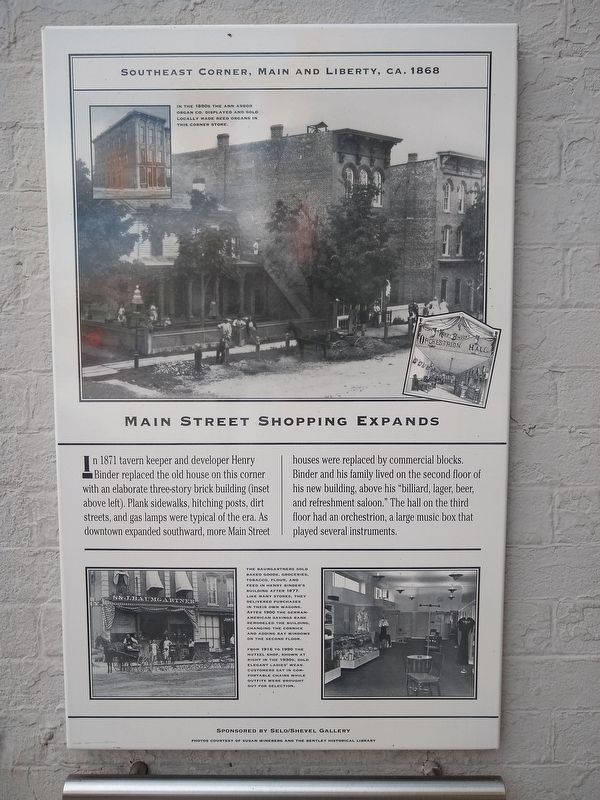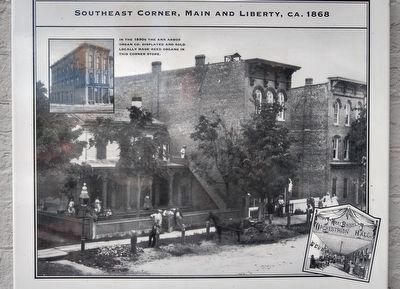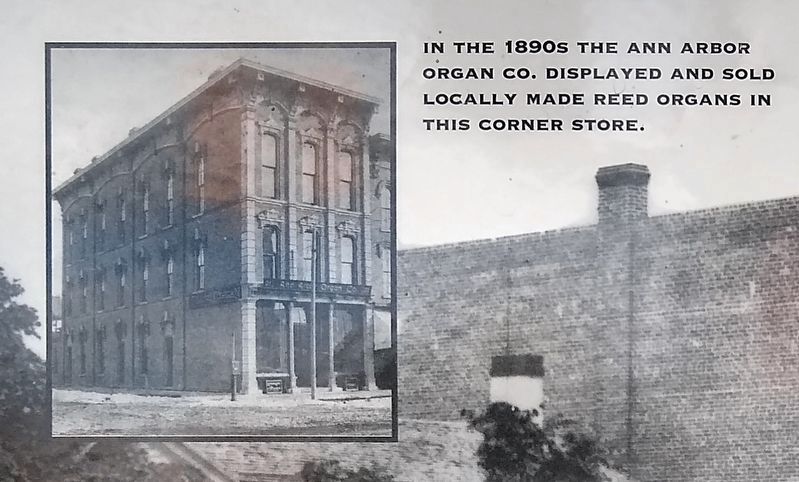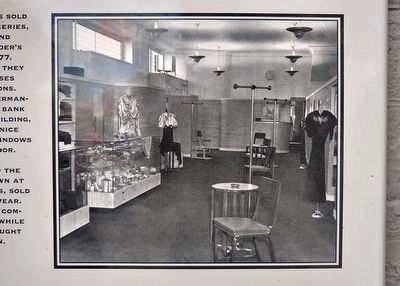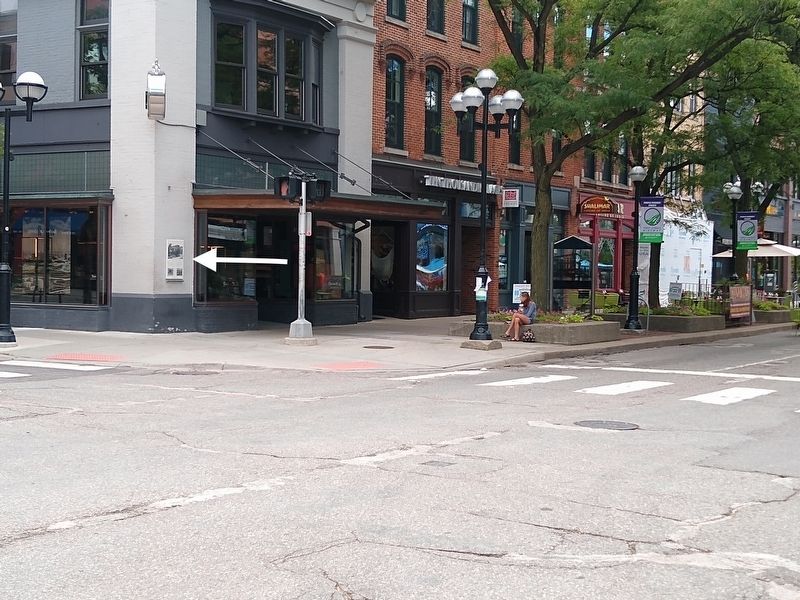Ann Arbor in Washtenaw County, Michigan — The American Midwest (Great Lakes)
Main Street Shopping Expands
In 1871 tavern keeper and developer Henry Binder replaced the old house on this corner with an elaborate three-story brick building (inset upper left). Plank sidewalks, hitching posts, dirt streets, and gas lamps were typical of the era. As downtown expanded southward, more Main Street houses were replaced by commercial blocks. Binder and his family lived on the second floor of his new building, above his "billiard, lager, beer, and refreshment saloon." The hall on the third floor had an orchestrion, a large music box that played several instruments.
Sponsored by Selo/Shevel Gallery
Photos courtesy of Susan Wineberg and the Bentley Historical Library
Erected by Ann Arbor Historical Foundation.
Topics. This historical marker is listed in this topic list: Industry & Commerce. A significant historical year for this entry is 1871.
Location. 42° 16.769′ N, 83° 44.908′ W. Marker is in Ann Arbor, Michigan, in Washtenaw County. Marker is at the intersection of South Main Street and Liberty Street, on the right when traveling north on South Main Street. Touch for map. Marker is at or near this postal address: 301 South Main Street, Ann Arbor MI 48104, United States of America. Touch for directions.
Other nearby markers. At least 8 other markers are within walking distance of this marker. The Main Street Shopping Experience (here, next to this marker); Downtown Movie Theaters (a few steps from this marker); Changing Retail Patterns (a few steps from this marker); First National Building (about 300 feet away, measured in a direct line); Business and Banking (about 300 feet away); Allen Creek Valley Shapes the Town (about 300 feet away); The Ann Arbor Railroad (about 400 feet away); Industry and Recreation on Allen Creek (about 400 feet away). Touch for a list and map of all markers in Ann Arbor.
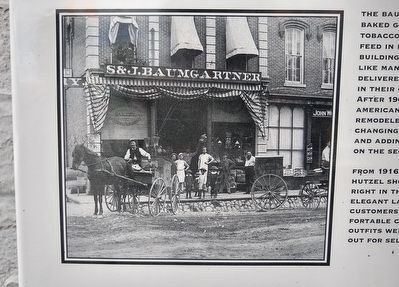
4. Main Street Shopping Expands Marker — bottom left image
The Baumgartners sold baked goods, groceries, tobacco, flour, and feed in Henry Binder's building after 1877. Like many stores, they delivered purchases in their own wagons. After 1900 the German-American Savings Bank remodeled the building, changing the cornice and adding bay windows on the second floor.
Credits. This page was last revised on September 2, 2020. It was originally submitted on September 2, 2020, by Joel Seewald of Madison Heights, Michigan. This page has been viewed 131 times since then and 6 times this year. Photos: 1, 2, 3, 4, 5, 6. submitted on September 2, 2020, by Joel Seewald of Madison Heights, Michigan.
